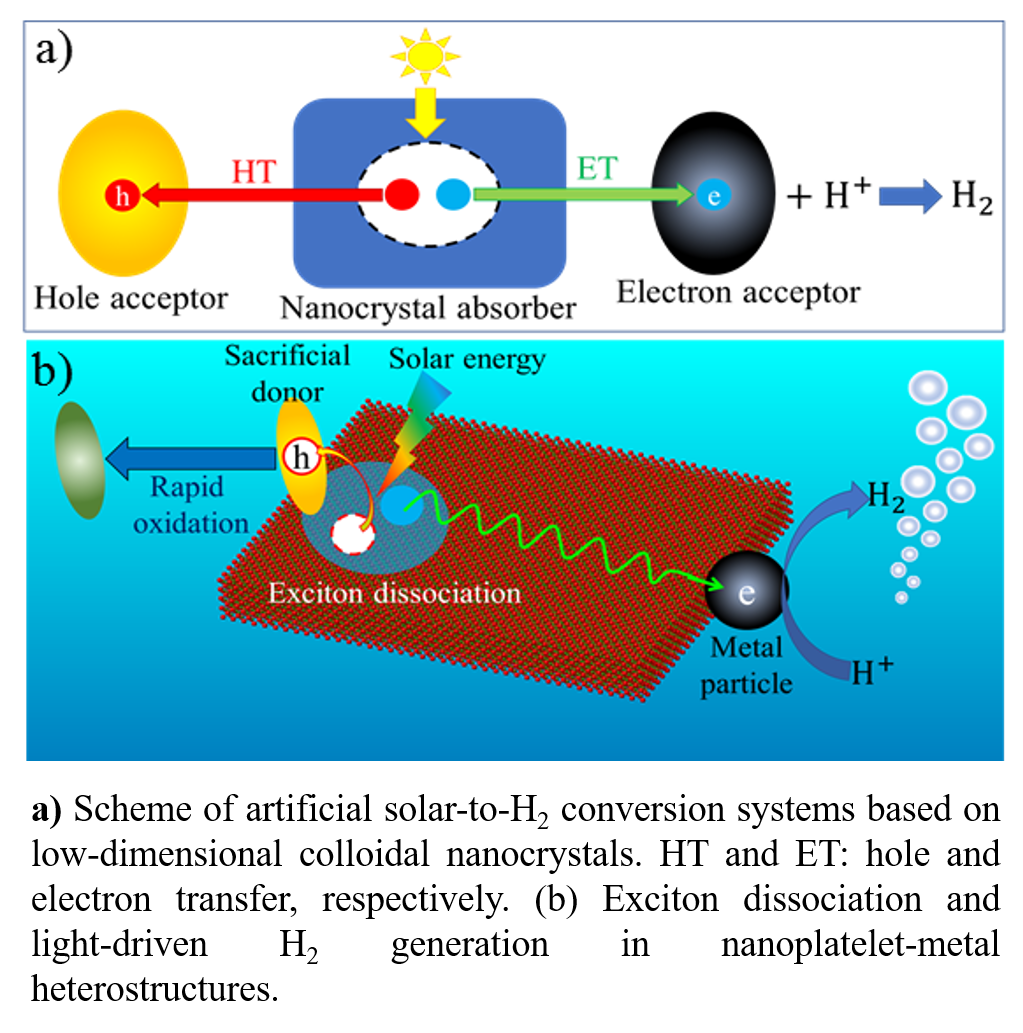|
Converting solar energy to chemical fuels through artificial photosynthesis addresses both solar energy conversion and storage problems. Quantum confined semiconductor nanocrystals have emerged as promising light absorption and charge separation materials because they have large absorption cross sections and their band gap, band edge positions and charge separation properties can be tuned through size, shape and composition. They have been integrated with metal particles, molecular catalysts or enzymes to form semiconductor-catalyst nano-heterostructures that have demonstrated promising performances for light-driven fuel formation reactions, such as H2 generation, CO2 reduction and N2 fixation. Despite these demonstrations, many fundamental challenges remain. The rational design and improvement of these photosynthetic systems requires the understanding of the mechanisms of long-distance charge separation and recombination in these nano-heterostructures. Furthermore, many catalytic reactions require that multiple proton coupled electron transfer (PCET) to the catalytic active site to avoid energetic intermediates. It remains unclear how to design colloidal nanoparticle/catalyst complexes to enhance PCET activities.Current research in this area is funded by DOE.
|


|
The current foci of this project are:
- Mechanism of long-distance charge separation and recombination in semiconductor NPL/metal heterostructures. Cadmium chalcogenide core/crown nanoplatelet heterostructures with metallic particles (Pt, Ni) at the edge are used as model systems to examine how the charge separation and recombination rates depend on the nanoplatelet crown size, metallic particle (size, number and identity), band alignment in the core/crown structures and temperature.
- Mechanism of multiple PCET from quantum-confined semiconductor nanocrystals to molecule catalysts for efficient light-driven H2 We will examine how the transfer of two electrons from nanocrystals to electron accepting molecules competes with multiple exciton and trion decays within the nanocrystals; how ET to molecular acceptors can be enhanced by coupling to the transfer of protons; and finally, how efficient light driven H2 generation can be achieved in nanocrystal/molecular catalyst complexes through efficient multiple PCET.


